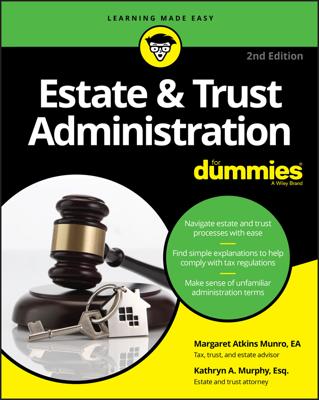When filing Form 1040 or Form 1041, your first task is to determine how much income the taxpayer (whether trust, estate or decedent) earned. Two of the main types of income you’ll have to deal with are interest and dividends. Use the taxpayer’s Forms 1099-INT and Forms 1099-DIV to calculate the taxable income from interest and dividends that you need to report.
Interest: Form 1099-INT
Interest is income you receive because you’ve lent money. No matter where or to whom you lend money, the income earned from that investment is interest.
With the exception of interest you earn when making personal loans, Form 1099-INT should tell you how much interest you’re dealing with. Add up all the Form 1099-INTs to get the year’s total. For non-calendar-year filers, remember that using 1099 information may cause you to either over- or under-report income. Make sure you keep excellent records to make up for this discrepancy.
You report total taxable interest on line 1 of Form 1041, or line 8a of Form 1040. You show exempt interest (interest not subject to federal income tax, like interest from municipal bonds) on the back of Form 1041, on Question 1 of “Other Information.” If you’re preparing the decedent’s final 1040, place his or her exempt interest on line 8b.
Dividends: Form 1099-DIV
Unlike interest, dividends represent profits from a company in which you own shares. You can earn dividends from publicly traded or closely held corporations, either domestic or foreign. You may receive them from specific corporations or from shares owned in a mutual fund, which buys and sells the shares of many corporations, giving you tiny pieces of each individual dividend.
Every January you receive a Form 1099-DIV, showing how much you earned from dividends. The most common types of dividend payments shown on Form 1099-DIV are the following:
Total dividends: Total dividends are the total amount of ordinary dividends you received. Add these numbers up from all Forms 1099-DIV and place the total on line 2a of Form 1041 or line 9a of Form 1040.
Qualified dividends: Qualified dividends are subject to lower income tax rates. If you’ve received more than one Form 1099-DIV, and each has an amount listed in box 1b, add all amounts shown in box 1b, and place the total on line 9b of Form 1040 or split between lines 2b(1) and 2b(2) of Form 1041.
Capital gain dividends: Capital gain dividends are payments you received that derive from the sale of assets within the fund and that are subject to a lower income tax rate.
You typically place the amounts shown in box 2 of Form 1099-DIV on Schedule D (for either Form 1040 or Form 1041). However, if you’re preparing the decedent’s Form 1040 and he or she had no other capital gains or losses, check the box next to line 13 of Form 1040, and then fill in the amount.

